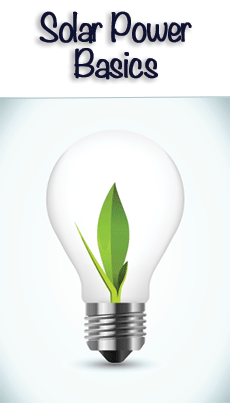The following 7 tips for going solar should help you decide if solar energy is suitable for your home or whether the economics are unfavorable. This type of seemingly free energy looks very attractive at first glance, but there are some factors that might count against it and others that could render it extremely attractive.
 1. How Much Sun Do You Get?
1. How Much Sun Do You Get?
There is little point going solar if you rarely see the sun! Or is that in fact true? How much sun do you actually need in order for solar energy to be viable? The amount of sunlight and the pitch of your roof are both important, so let’s consider sunlight first. Ideally, you should have a roof that is exposed to full sunlight for at least six hours daily, generally from 9 am to 3 pm when the sun is at its best for this purpose.
2. The Effect of Shade
Those that claim it to be possible to generate power in full shade are talking nonsense. Photovoltaic cells generate electricity from radiant sunlight, and if your roof is shaded by trees or other buildings, then you will have a problem. A single leafless tree branch casting a shadow on a panel can reduce its output by up to 80%
3. The Seasonal Effect on Solar Energy
A good tip is to adjust your solar panels differently for summer and winter. North America receives more energy from the sun during summer months, and less in the winter – so your electricity output will vary accordingly. You can do nothing about that.
4. The Ideal Angle for Solar Panels
The ideal angle for solar panels is dependent on your latitude. Ideally, you should change this angle four times annually, although any are fixed and some are difficult to change and people do so only twice a year – summer and winter. There are formulae available online that lets you calculate your idea angle.
If we take Seattle and Miami as two examples, these cities are at latitudes of 47.6 and 25.5 degrees respectively. The best compromise on the angle for fixed panels that cannot be changed is 39 degrees in Seattle and 22 degrees in Miami.
Where they can be changed twice annually, the summer and winter angles for Seattle are 23 and 61 degrees, and for Miami are 3 and 43 degrees. Summer is said to begin on March 30th for this purpose in the USA, and winter on Sept. 12th.
So, just fixing your panels flat to a pitched roof is not good enough yet that is what many people will do. It is far more effective to fix them to moveable frames in your backyard, although you would be sacrificing garden space for energy production.
5. Sun Trackers are Good
If you have the resource, then the best choice is a sun tracking system. These follow the sun’s movement and so direct the maximum solar energy to the photovoltaic cells for maximum energy production for your home. They are naturally more expensive than fixed or even adjustable mountings, but consider that against the savings in electricity.
6. Buy From a Reputable Company
Not all solar panels are equal, and if you intend purchasing, make sure you do so from a reputable company that is still likely to be in existence in 20 years time. There are many new companies arising in the Far East offering cheap solar panels, but their quality is unknown as is their ability to endure over the years. A lack of spares in a few years could mean you having to buy a new set of panels!
7. Do the Math – and Get Any Rebates Going
Finally, do the math and work out your prospective saving. If the cost outweighs the savings in your latitude then leave it. However, you might qualify for a rebate or grant to help pay the installation cost. Some countries are offering financial incentives to install this type of clean renewable energy – so check out what you might qualify for.
Solar power or solar energy – call it what you want – is a good way of producing cheap electricity for your home, and depending on where you are, you may be paid for feeding your excess into the grid. This is a clean form of energy, and increasing numbers of people are installing solar panels worldwide.


About The Author: Karengustin
More posts by karengustin